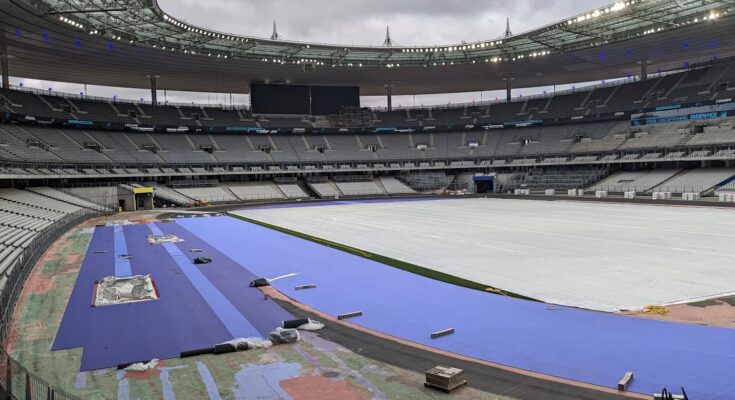Historically, the track for athletics events at the Olympics has been red. However, at the Paris 2024 Olympics, the athletics events will have a revolutionary purple track.
This is the first time in Olympic history that the track will not be red. The idea behind this purple track is for it to be more aesthetically aligned with the Paris 2024 Olympics aesthetic given that these were the colors chosen by the organizing committee.
Nevertheless, what makes this Olympic purple track revolutionary is the materials from which it is made. This revolutionary track is made out of sea shells and mussels.
The Paris 2024 purple track made by Mondo
The purple track that will be used at the Olympics works exactly how a regular red rubber track would. The key difference between both types of tracks is the environmentally friendly materials the purple track is made of.
The designing company, Mondo, partnered with a fishermen’s cooperative to collect sea shells, clams, and mussels from the Mediterranean Sea. The aim of this partnership is to turn organic residues into construction materials.
In doing so, Mondo was able to create a supply chain between the natural and industrial processes track creation requires. The company intends to create a new generation of environmentally friendly sporting grounds.
Mondo chose to create the track out of these materials because flexible sporting grounds are rich in calcium carbonate. The shells and mussels chosen for this track are also rich in this component.
The sports industry will look to reduce its emissions by using seashells for construction
The problem that track buildings currently face is how unsustainable it is to extract carbonate calcium.
Carbonate calcium is traditionally obtained through mining limestone and marble. The new supply chain implemented by Mondo and the fishermen’s cooperative significantly reduces CO2 emissions in this process.
The creation of the revolutionary purple track at the Paris 2024 Olympics has been in the works for over three years.
In an official statement, the fishermen’s cooperative behind the purple track at Paris 2024 stated that “the project will pave the way for a future vision for sustainability and the involvement of local communities.”
The track cost 3 million Euros to construct
The new track covers 17,000 square meters of terrain and costs 2 million euros. However, this track will have a useful life of more than 10 years in future sports events in Paris.
Mondo, the company that manufactured the purple track has installed a track of this type for 12 different Olympic Games events. At the Tokyo Olympics in 2021, they used three-dimensional rubber granules.
The granules were supposed to work together with a system of select polymers placed in the top layer. As a result, athletes were expected to be able to reach greater speeds without hindering their performance.



